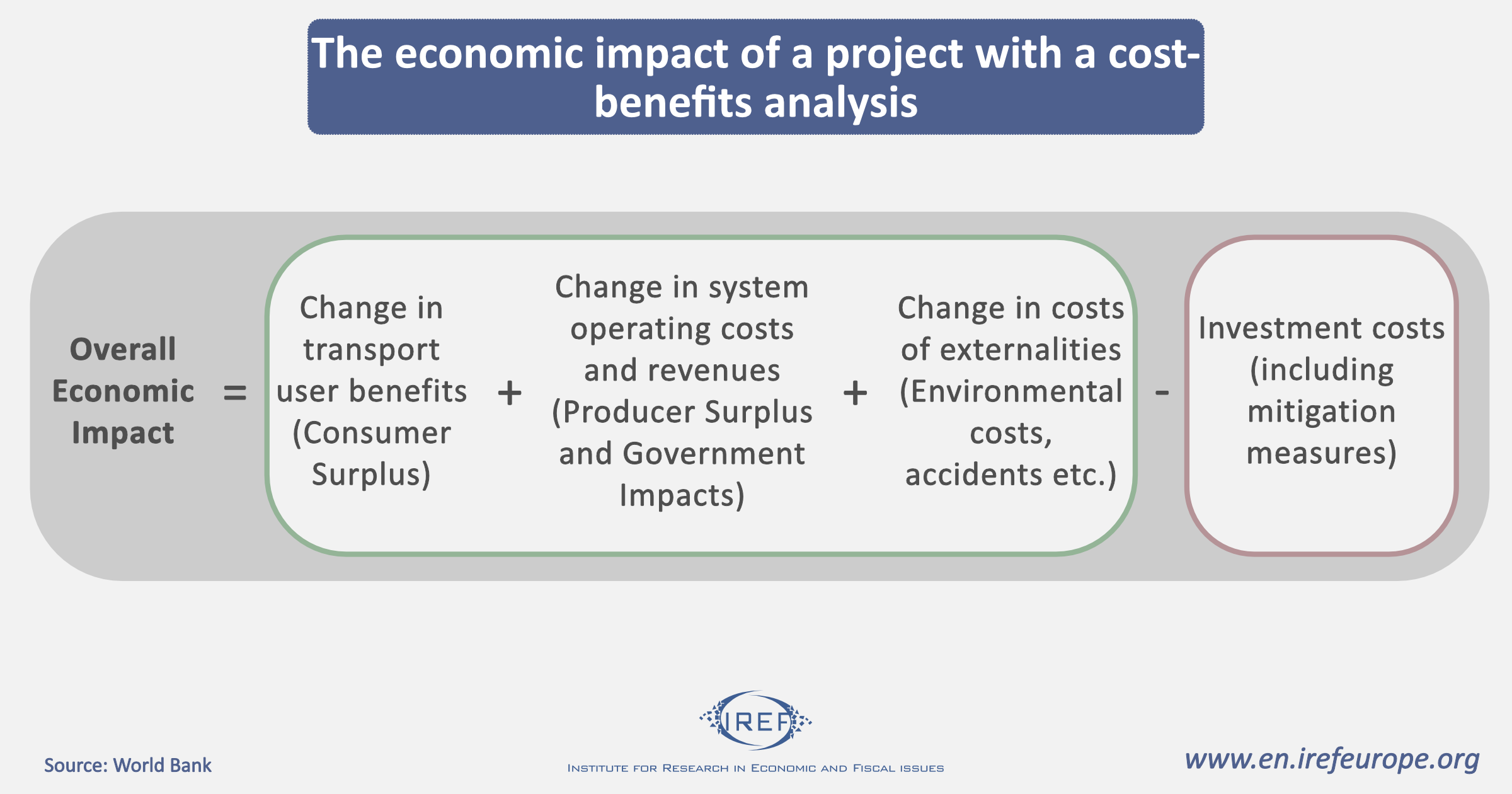As is well known, in Western countries public spending represents today a high percentage of the gross domestic product. In Europe, it stands at around 50%.
Cost-benefit analysis (CBA) has been developed to evaluate the efficiency of certain categories of expenditure (especially investment projects). Although it has has ancient roots, the formal and systematic use of CBA can be traced back to the 19th century. In particular, in 1844 French economist Jules Dupuit published CBA’s methodological foundations in the Annales des ponts et chaussées. In his article titled “De la mesure de l’utilité des travaux publics“, Dupuit explored how to determine whether a public project is worth the investment by comparing the costs to the benefits generated for society. The first large scale use of CBA dates back to the time of the Great Depression in the United States, when it was employed by agencies like the Tennessee Valley Authority to assess the economic feasibility of large stet projects: dams, roads, and other infrastructure.
CBA is based on the Kaldor-Hicks criterion, according to which a change can be considered a social improvement if the gains to the beneficiaries are so large that they could compensate the losers and still leave the beneficiaries better off. The compensation does not have to actually occur. The theoretical possibility is enough to make the change socially desirable.
CBA can be seen as an evolution of the financial analysis done by private entities, but with some significant distinctions. In the private case, the analysis is focused on economic returns for an individual or company. Instead, CBA assesses costs and benefits for society as a whole. For example, when building a subway line, CBA considers the benefits accruing to the users and the producer, and also those relating to agents not directly involved in the project. In our example, this indirect effects regard the reduction in road traffic, which has positive consequences both in terms of reduced congestion and lower vehicle emissions (air pollution and noise).
In general, the satisfaction enjoyed by the consumer corresponds to the benefits he/she obtains when consuming a good/service. By contrast, his/her surplus is the difference between such satisfaction and the amount of money he/she pays to buy the desired quantity of the good/service is called consumer surplus. In other words, the consumer’s surplus is the satisfaction one obtains for free (no monetary sacrifice or of any other kind, such as time spent and effort). When one assesses the desirability of a project by resorting to CBA, therefore, one compares the changes in the consumers’ surpluses.
In this light, let us examine what happens when individuals who usually travel a given distance by car consider taking the train. The change in the consumer surplus by choosing the train amounts to the difference between the surplus obtained when traveling by train and the surplus obtained when traveling by car. The former is the difference between the utility gained from having made the trip (approximated by the maximum price one is willing to pay for the ticket) and costs: travel time – including the time one needs to get to the station and waiting times – which is usually the most important element1, the price of ticket and all the other qualitative elements that characterize the journey, such as the need to change mode of transport and to move one’s luggage or the possibility of the railways’ personnel going on strike. On the other hand, the surplus obtained by travelling by car is the difference between the utility generated by the trip and the cost in terms of travel time and running costs (including parking, insurance, petrol, fatigue, possible accidents). It follows that moving from the car to the train is desirable if the difference between the two consumer surpluses is positive.
When the producer is the state, CBA taken into account not only of the investment and infrastructure management costs but also of the effects that its realization has in terms of tax revenues. The taxes needed to finance expenditures provoke distortions and lower private output, and these effects must also be taken into account. For example, the Italian government’s guidelines suggest that cost of increasing taxation is between 1 and 1.30 euros for each extra euro of tax revenue. According to a paper by M. Feldstein, this value is substantially greater and may exceed $2 per $1 of tax revenue.
Similarly, in the case where the infrastructure manager is a private entity, one must consider the potential variation in profits.
In the following figure, all the elements considered in the CBA are summarized.

The greatest advantage of CBA should be to replace discretionary decisions with “objective” criteria. Yet, CBA still relies on (sometimes inevitable) bureaucratic assessments. Moreover, as we will see in a forthcoming article, the practical application is often unsatisfactory and in many cases turns the methodology into a sort of fig leaf to endorse prior decisions.
1 This is why for most trips people prefer the car even if it is more expensive than public transportation.


